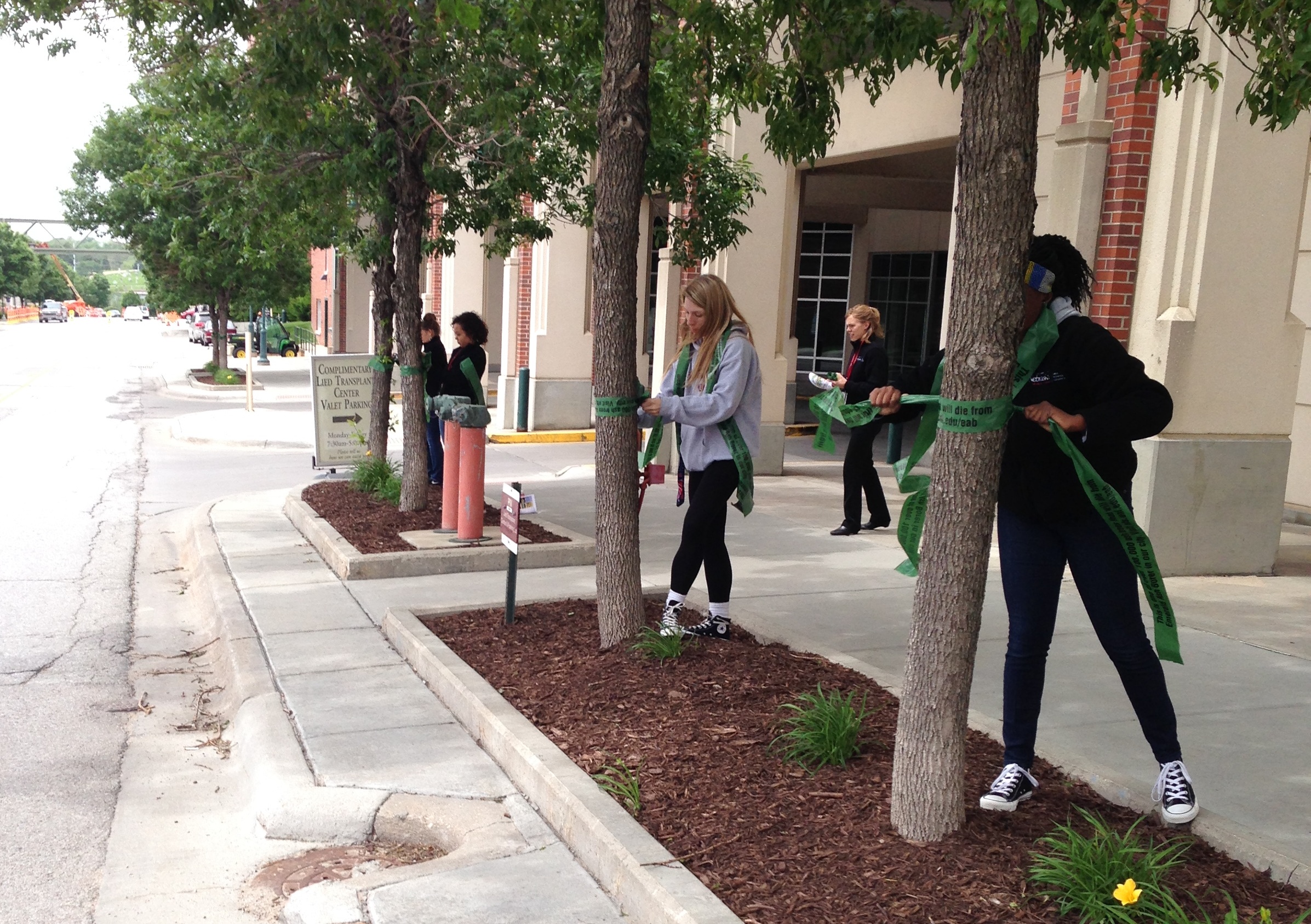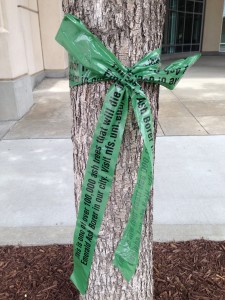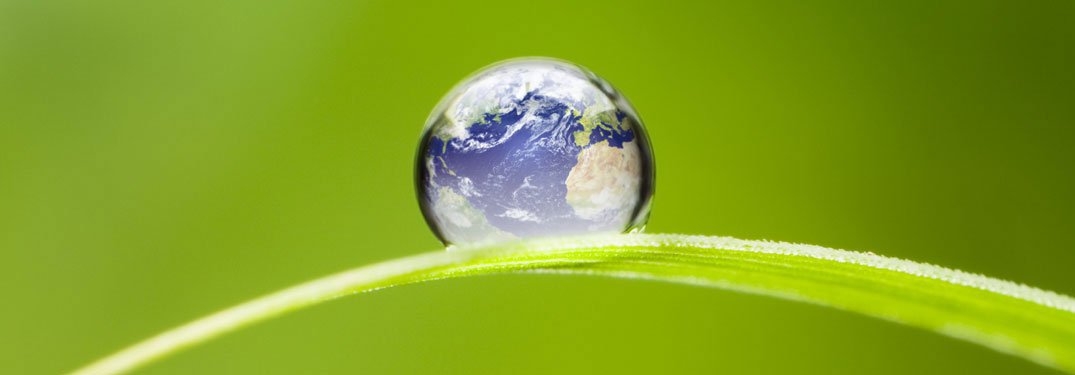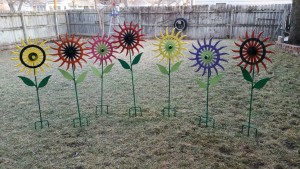TravelSmart Questions Answered: Yes, It’s Really Free!
I’m hoping that you have heard of the new TravelSmart program; here are some answers to your questions:
Cost
Yes, it’s FREE! Sign-up is free and your free bus pass will continue to be free. It’s not tied to your Metro Credit Union account; your badge is used only to identify you as a rider.
TravelSmart is a perk and can save you money while reducing pollution and promoting a healthy lifestyle while reducing parking pressure and traffic congestion.
If you choose to carpool and all members of the carpool turn in their parking permits, you will receive a FREE carpool pass to the best parking lot among you (your group’s choice).
Parking Permit
Not quite ready to relinquish your parking permit? You can keep it and still use any of the active transportation options with access to all the support programs. Turning it in will save you additional money. Our Savings Calculator will tell you how much money you can save and whether it’s financially advantageous for you to keep your permit or turn it in—either way it’s your choice.
Daily Rate Flexible Parking is available if you need to drive to campus and don’t have a permit. It’s cheap, lots are located around campus, and you can pay via smartphone or website.
If you carpool partner isn’t coming to work, you can still use your carpool pass. If you are both driving that day, one can use the carpool pass and the other can use Daily Rate Flexible Parking.
The 3 month trial starts when you turn your permit in. You save money while you test out TravelSmart, and get your same permit back if you still want it.
Carpool
If you want to carpool but don’t know who to drive with, check our carpool matching page. Signup on Zimride is free and only people from this campus can see the rides that have been posted. You don’t have to ride with the person it matches you with, so there’s no harm in posting a ride to see if it will work out, even if you work odd hours or a different shift.
Registering for TravelSmart
Click on the appropriate button on our registration page to go to the correct self-service page. Please note that Nebraska Medicine and Clarkson College employees need to check the “Olympus” box prior to logging in. If you are unfamiliar with that page check out the instructions with screen shots on our registration page to help guide you.
Questions?
If you have more questions visit our FAQ page or Video/Resources page. Or email TravelSmart@unmc.edu or call 559-8580 (ext. 3); we are happy to help!
Ash Trees in Jeopardy

The Emerald Ash Borer (EAB) is on its way to Nebraska. It is an invasive beetle that lays eggs on ash trees. The larvae hatch, bore into the layer of wood beneath the bark, responsible for water and nutrient movement in the tree, and this eventually kills the tree.
EAB is currently 80 miles away from Omaha and in Iowa, Kansas, Missouri, Minnesota, and Colorado. Omaha has an estimated 100,000 ash trees, all of which would be wiped out by an EAB infestation. This will remove 14% of Omaha’s tree canopy and change the landscape of our city. Almost every tree lining Emile and Farnam Streets on the 42nd and Dewey campus are ash trees, as are almost all of the trees lining Regency Parkway, Abbot Drive, and along the streets of Memorial and Elmwood parks.
Not only will we lose the trees and the benefits they provide, but removal of the dead trees will cost millions of dollars. So far, EAB has killed an estimated 54 million trees in the U.S. in the last 13 years.
So what can you do to stop the devastation?
- Educate yourself on EAB, identify ash trees in your area, educate others.
- unl.edu/eab
- Don’t move firewood as beetles and larvae can hide and be transported. Buy local, burn local.
- Remove ash trees in poor condition.
- Treat healthy ash trees to slow down the spread of EAB.
- Spray and soil applications are available; talk to a certified arborist.
- Plant more trees now.
- Plant diverse species to protect against future loss. Do not plant ash trees now, as they will be killed when EAB arrives.

- Plant diverse species to protect against future loss. Do not plant ash trees now, as they will be killed when EAB arrives.
Last week was EAB Awareness Week. To help spread awareness, the Omaha Parks Foundation and City of Omaha Forestry Division held a press conference and wrapped trees in many city parks in emerald ribbons.
To show support, and as part of our Tree Campus USA service learning project, students with the High School Alliance wrapped many of the ash trees on campus with green ribbons. They learned about the EAB and helped to promote awareness of its damaging effects.
Their efforts were covered by multiple news stations, and those stories can be seen here (contains additional info and pictures of EAB and damaged trees) and here.
The High School Alliance Students continued their work and on Friday returned to campus to help pick up trash, pull weeds, and haul and spread mulch around the Durham Research Centers. The space looks fantastic, thank you for all your work!
Rot is Good
by Anne Rivas
I promised to write about how different methods of winter composting worked out. I used three outdoor methods, knowing that the composting process (i.e., rot) slows way down in the winter. I used a pallet bin, a compost tumbler, and I sheet-mulched a large area of lawn for a new pollinator garden.
It was my fault that the tumbler didn’t work. I had a good mix of green and brown materials, but not enough ![Anne0701[1]](https://livegreennebraska.com/wp-content/uploads/2015/02/Anne07011.jpg) moisture or microbes. I should have added some dirt for the microbes necessary to the rotting process, and some of the commercial “starter” that came with the bin. The advantages of using a tumbler are that you just turn the drum to mix and aerate the compost, and you don’t have the possibility of critters coming to live in it. The disadvantage is that you are re-creating a natural process in a closed environment and if you leave something out the process doesn’t work.
moisture or microbes. I should have added some dirt for the microbes necessary to the rotting process, and some of the commercial “starter” that came with the bin. The advantages of using a tumbler are that you just turn the drum to mix and aerate the compost, and you don’t have the possibility of critters coming to live in it. The disadvantage is that you are re-creating a natural process in a closed environment and if you leave something out the process doesn’t work.
The volume of materials in the pallet bin has steadily been going down, indicating the materials are being digested and turned into dirt. I’ve continued to add kitchen scraps and leaves all winter, and I should begin turning it once a week. The advantage to this method is that you just add green and brown materials and let nature take its course.
The most successful method was the sheet mulch. The main problem with the sheet mulch is that I buried four sprinkler heads underneath it. (Duh) The night before the irrigation company came to service the system, I spent a couple of hours digging down to locate the sprinkler heads. I found lots of exciting bugs, worms, and good, rich dirt, but no hardware. The sprinkler company found and marked the buried sprinklers for me.
To sum up, the tumbler is the least amount of work but you have to keep tabs on the process, and if you leave something out it doesn’t work. The pallet bin is more forgiving. It supplies dirt, microbes, and bugs, but is more work to turn. Sheet mulch is great, but you need an area of lawn to sacrifice. Covering it with a few inches of bark mulch to keep the leaves in place through the winter would have been a good idea. And remember to mark the positions of sprinklers before covering them up!
Compost recipe:
Green Materials (fruit and vegetable waste, grass clippings, weeds that have not gone to seed)
Brown Materials (leaves, shredded non-glossy paper, dried plant matter)
Moisture (about the consistency of a wrung-out sponge)
Activator (garden dirt, alfalfa, herbivore manure, commercial “starter”)
Air (spin tumbler or turn pile to introduce air into process)
Heat (generated by the composting process)
Green and brown can be in equal amounts. If it starts to smell bad, add more brown. If it’s too wet, add dry brown.
Dirt can be a thin layer of dirt, compost, rotted or dried manure, or contents of rabbit or hamster cage.
Waterlogged
After a rainy week, it seems odd to talk about water conservation but we often forget how dependent on water we are and how scarce it can be. It’s easy to turn on the faucet and get fresh, clean water, but imagine how much less water you would use if you had to haul it from a nearby reservoir, or wait in line to receive your ration.
It can be easy to dismiss that notion as we live in the developed world, but the state of California is in such a water crisis that they just announced mandatory water restrictions effective June 1, with some communities being

sustainability manager
forced to cut water usage by 36 percent. Given that a sizable portion of the U.S. economy, and probably a sizable portion of your dinner plate, comes from California agriculture, their water issues may affect us in a very real way. If that is not close enough to home, did you know most of us use 20 gallons of water per shower? Or that the EPA estimates Nebraska to be one of the top seven states for water use per capita?
Thankfully, there are some relatively simple things you can do to be conscious of the water you are using/wasting that can have a sizable impact.
- Can you waste less water? Place a pitcher in the sink/shower, fill it while waiting for hot water, and use that to water plants.
- Buy faucets and fixtures with the Water Sense label.
- Take a five-minute shower. Don’t know how to time yourself? Check out the box below for a list of five-minute-long songs you can listen to while you shower.
- Turn off the faucet when you brush your teeth.
- Turn the faucet on part way, only using the pressure you need.
- Check your sprinkler system. Don’t run it when it’s raining. Make sure programs are correct. Check sprinkler heads to make sure they are watering your grass and not concrete.
- Or forgo the grass! Look into other low-water-use plants and groundcover; consider xeriscaping.
- Build a rain barrel. It’s easy, inexpensive, and provides free water for your garden or to wash your car. Did you know that more than 600 gallons of water will run off a 1,000- square-foot roof during a 1-inch rain?
Five-minute songsLooking for help to time your shower? Cue up one of these songs:
- Aerosmith, “Sweet Emotion”
- The Beatles, “While My Guitar Gently Weeps”
- Beastie Boys, “Body Movin’”
- Blake Shelton, “Boys ‘Round Here”
- Coldplay, “Clocks”
- Creedence Clearwater Revival, “Born on the Bayou”
- Dave Matthews Band, “Tripping Billies”
- Flock of Seagulls, “I Ran”
- Fred Hammond, “No Weapon”
- Jefferson Starship, “We Built This City on Rock & Roll”
- Kanye West, “Stronger”
- Lady Gaga, “You and I”
- Lynard Skynard, “Sweet Home Alabama”
- Michael Jackson, “Thriller”
- Paul Simon, “ You Can Call Me Al”
- U2, “Walk On”
Have a 5 minute song you’d like to recommend? Feel free to leave it in the comments section below!
Earth Week Wrap Up

The 5th anniversary of Earth Week on campus added some new events to the old favorites.
We kicked off the week by planting two trees in front of the Durham Research Center— commemorating Arbor Day, and celebrating our designation by the Arbor Day Foundation as a Tree Campus USA.
On Tuesday the campus voted for their favorite Repurpose It contest entries. There were 40 fantastic projects to choose from and here are your winners:
- Popular Vote: 20 minute massage from the Wellness Center & $25 gift certificate to The Union Junktion store

- Jessica Odvody, Rotary Hoe-Flower Yard Art
- Habitat for Humanity Restore: $25 gift certificate to the Restore
- Mike McGlade, Pallet/Planter- Patio Table with Drink Chiller
- Reclaimed Enterprises: Handcrafted serving tray made by Barnwood Trays & 10% discount at Reclaimed Enterprises
- Dot Northwall, Kitchen Island of Shutters/Stairs/Fence/Curtain Rod
- Verdis Group: 20 minute massage from the Wellness Center
- Jocelyn Pearson, Center Pivot Swing Set
- LiveGreen Committee: One received a gift certificate to The Company Store, the other a UNMC Bookstore gift bag.
- Samantha Straw: Pallet/construction supplies- Dog House
- Kelli Ryan: Leftover Floorboards -Wall Art
You can see the projects here. We hope you will be inspired to repurpose items at home and take pictures to enter next year’s contest!
We added single use alkaline batteries and techno trash to the electronic-recycling and personal document shredding collection. We received over 4 tons of material, provided identity protection to donors, and sent it to be recycled instead of to the landfill. This equals the size of a white rhinoceros, and will prevent 12 metric tons of carbon dioxide from entering the atmosphere, equivalent to not consuming 1,350 gallons of gasoline.
5,049 lbs of electronics
2,788 lbs of paper
389 lbs of techno trash
92 lbs of batteries
The first Sustainability Expo capped off the Earth Week festivities. Attendees picked the brains of master gardeners, tasted great recipes using high-protein plant sources like quinoa and bulgur, and learned about recycling on campus and at home. There was information about green cleaning, the Commuter Challenge, Vermicomposting, UNMC student bicycling club, tele-health and wellness, and as a special treat, a fun remote control car race that will help kick off TravelSmart on campus June 1st.
Thank you for attending and for your interest in Earth Week on campus. If you have any ideas for next year or would like to help plan activities, please email livegreen@unmc.edu.
Plant Based Eating: Food for Thought
by Anne Rivas
I’m a meat eater, a carnivore. Like my mother and grandmothers before me, I plan and cook meals where meat is the main attraction. I enjoy a high protein diet, and for the past 4 years have focused on eating mostly whole or minimally processed foods, organic fruits and veggies, and pasture-raised meats. I even tried paleo for a little while, but eliminating whole food groups didn’t seem healthy.![Anne0701[1]](https://livegreennebraska.com/wp-content/uploads/2015/02/Anne07011.jpg)
This spring I found out I need to lower my cholesterol. I wasn’t surprised. To avoid medication several years ago, I gave up red meat and walked or biked 90 minutes a day. It worked. Three months later my cholesterol was down.
My doctor and I discussed shifting to a plant-based diet. I’ve watched Forks Over Knives, read The China Study, by T. Colin Campbell, Ph.D., Prevent and Reverse Heart Disease, by Caldwell B. Esselsten, Jr., M.D., and most of Michael Pollan’s books. The USDA has revamped dietary recommendations once again, this time including plant proteins. Maybe I don’t need three meat-based meals per day.
I decided I could do it. I would switch to a completely plant-based diet and exercise vigorously for 90 minutes every day. My doctor deserves a medal for keeping a straight face during this conversation.
I confess that for years I have flirted with vegetarian eating. I have made smoothies and “ice cream” with frozen bananas and tofu. I’ve grown my own organic vegetables, made my own bread and yogurt. I have mad hippie skills, but they’re not necessary now that organic vegetables, good bread, and yogurt are easily available.
A lifetime of cooking meat and saving leftovers for sandwiches proved more difficult to change than expected. My all-or-nothing approach has already failed, but it did distract me from exercising. Switching from a diet of mostly meat to a diet of mostly plants takes trying new recipes and developing new tastes. I am moving toward more plant-based, but not totally vegetarian eating. Cutting out an entire food group still doesn’t seem healthy. I still eat fish, eggs, and yogurt. And sometimes hot dogs – the good ones without nitrates.
I’ve found a couple of recipes I like: Black Bean Patties from Moosewood, and White Bean Soup.
Pollan’s words are my new motto: “Eat Food. Not too much. Mostly plants.” And I’m looking for reasonable ways to incorporate more exercise.
White Bean Soup
1 lb. dried white beans (navy or cannellini), rinsed;
10-11 cups water, vegetable stock, or chicken stock.
1 large chopped onion,
several cloves of garlic, minced or pressed
2 Tablespoons of olive oil
¼ Cup of grated or shredded Parmesan Cheese
Bring the beans and water or stock to a boil on the stove, then dump into the crock pot and cook on low for 8 hours. Blend as much as you want to with immersion blender. Sauté the chopped onion and minced or pressed garlic cloves in the oil, then add to the soup. They should be a little crunchy. Stir in the cheese; add salt and black pepper to taste.
Monarch Migration Stations

Today is the 45th anniversary of Earth Day. The original Earth Day was a “national teach-in on the environment” as a response to an oil spill in California, industry pollution, and heavy use of leaded gas. Through the years numerous environmental causes have been brought to the forefront and different people have embraced different causes in different ways. Finding something you are passionate about supporting is important, whether it’s rainforest protection, energy conservation, or even the plight of the pangolin.
One topic that’s made headlines lately is the Monarch Butterfly. It’s one of the most iconic butterflies and is known for its impressive migration. Millions of butterflies migrate thousands of miles across North America into Mexico, where they stay in the same trees every year. What makes this even more impressive is that one complete migration cycle takes multiple generations of Monarchs; each generation completing only part of the journey. Two major migration routes pass through Nebraska.
What many people don’t know is that their population has declined to less than 10% of their original numbers, making them vulnerable to extinction.
This is largely due to habitat loss; ground used for farming instead of native plants and pesticides used in ditches next to roads. Interestingly, Monarchs are dependent on milkweed (Asclepias spp.). Not only do adults feed on the nectar and need to lay eggs on milkweed, but caterpillars only eat milkweed plants. Milkweed also provides a chemical maintained by the caterpillar/adult that serves as a defense against predators.
So what can you do? Plant some milkweed! Most people are familiar with the Common Milkweed with broad leaves and pinkish flower, but other species are native to Nebraska and zone hardy (so they come back next year) including Swamp Milkweed (shown above), Ice Ballet (white flower), and Butterfly Weed (orange flower).
Check out Iowa State’s Monarch Conservation Consortium, they are currently testing milkweed types to see if Monarchs have a favorite.
Visit MonarchJointVenture for information on habitat, gardens, land use, and to find different types of milkweed plants and seeds for purchase. The Xerces Society has information on native pollinator plants for this region, which help butterflies and other pollinators like bees. You can even create your own certified Monarch Waystation.
Watch more here or check out this month’s Nebraskaland magazine for more. Planting flowers for butterflies and other pollinators? Let us know by emailing livegreen@unmc.edu
Looking Ahead to Earth Week
Next week will be the fifth anniversary of Earth Week on campus, and LiveGreen has planned a variety of activities based on your feedback.
Monday:
Kick off Earth Week with a celebration of Arbor Day and our second year as a Tree Campus USA. We will have a tree planting in front of the Durham Research Center buildings at 10:30 a.m. Free serviceberry trees will be available on a first-come, first-served basis.
Tuesday:
Second annual ReUse It Contest: This year, we have even more prizes to award, and entries are due tomorrow. Entries must contain an item that has been repurposed to make something new. Check out the LiveGreen

sustainability manager
website for all the details. Watch the Habitat for Humanity Restore Lunch and Learn for tips, tricks and inspiration. Check out the LiveGreen Pinterest page for inspiration on ways to repurpose items around your house, saving
you money and reducing trash. You’ll also find information on a variety of other sustainability related topics.
Wednesday:
Earth Day’s 45th anniversary will be celebrated worldwide. Take part in local and online events. We will provide additional information online.
Thursday:
Electronics recycling and personal document shredding is a favorite event, and this year we are collecting even more items. In addition to personal electronics and documents, we will collect your household alkaline/single use batteries as well as “techno-trash,” including computer disks and VHS tapes. Visit the LiveGreen website for a full list of items we will accept as well as prices for recycling some of them.
Friday:
You asked us to provide information on a variety of topics to help you live more sustainably, so we are happy to announce the inaugural Sustainability Expo! Come visit us in the Student Plaza (rain location DOC Atrium) from 11:30 a.m.-1:30 p.m. to talk to local experts. We’ll have information on recycling, food, composting, travel, health, Community Supported Agriculture (CSA) memberships, types of gardening, plus more free trees and wildflower seeds. Master gardeners and other experts will be on hand to answer your questions. Spirit Day will celebrate with us this year, providing snacks, prizes, and more giveaways! Check the LiveGreen website often for a full list of exhibitors.
LiveGreen looks forward to celebrating Earth Week with you. Add these events to your calendar, and we’ll see you there!
Find Your Park

I love national parks.
When I need to go to my happy place in my mind, it’s always a national park. I love the views, the smells, the history, and the time spent at that park’s activities, which for me often includes hiking and a little quiet time. And of course I love the fact that they are preserving these spaces for future generations, and have developed a robust sustainability program to help.
I think one of the greatest things about national parks is that there’s something for everybody. Mountains, oceans, deserts, beaches, volcanos, rain forests, historical places, whatever wildlife, landscape, and temperature interests

sustainability manager
you. You can be with groups of people, find solitude, totally rough it or stay in luxury. They offer kid’s activities, can educate you on anything from ancient to recent history, many portions are ADA accessible, help you to find a new appreciation of Mother Nature, and there are so many (464!) that you are always within driving distance.
So I was surprised to learn that park attendance is down. The baby boomer generation helped make national parks thrive harkening back to the “see the USA in your Chevrolet” days. As that generation ages, new generations aren’t flocking to national parks the way they used to.
In anticipation of the National Park’s 100th birthday, the National Park Service has started a “Find Your Park” promotion. You can find your favorite park, new park, or park that’s close by and visit. Your entry fee helps support the parks and keep them protected for future generations.
Getting ready to plan your summer vacation or a weekend trip? Stay local and save some gas money by visiting one of Nebraska’s 6 parks or one of the 43 parks in neighboring states.
Don’t forget, this year 4th graders and their families get in free!
Check out the Find Your Park page to see the map of all national parks, information on each park with specifics to help you plan your visit, special events going on throughout the year, and even information on being a citizen scientist! For more information you can also go to the National Parks Service.
One less paper towel a day
Do you dry your hands correctly? I know it sounds like a silly question. If your hands are dry, you’ve done it correctly, right?
I beg to differ.
Did you know Americans use 13 million pounds of paper towels every year?
Just on this campus, we currently use 7,750 miles of paper towels every year. That’s not a typo, that’s miles of paper towels. Need perspective? Laid end to end, that will get you from Omaha across the Atlantic, through Europe, and all the way to New Delhi, India — with 200 miles of paper towels to spare!

sustainability manager
But what are you supposed to do about it? Washing hands is important, as is drying them. The question is, how many paper towels do we really need to dry our hands? Most of us take three — some take a few more.
If you want to be really efficient you can get by with just one paper towel every time you wash your hands. For a quick tutorial on how to do it, check out this short TED talk video.
I’ll admit, I was skeptical. It’s not like our paper towel holders are stocked with the super-duper-absorbent-quilted-whatever paper towels. But I had to try. Much to my delight, the technique described works. You Melanie Stewart
sustainability managerdo have to follow all the steps, including the folding in half, with the most important part being shaking the water off.
Important note: Do not shake water all over the mirrors, counters and floors. Making a mess elsewhere isn’t sustainable or polite. If your infection-control procedures require you to do something specific, do not change your protocol. Health and safety is always more important.
Did you know that if every American used just one less paper towel per day, we would reduce the use of paper towels by 571.2 million pounds per year? That would save 11.4 trillion gallons of water and 4.8 million trees a year. Not to mention all the gas consumed and pollution emitted to convert trees into paper towels and transport them to their destinations.
I challenge you to try this out. One less paper towel per person per day. At home and at work, you can make a simple change that will have a huge impact.

